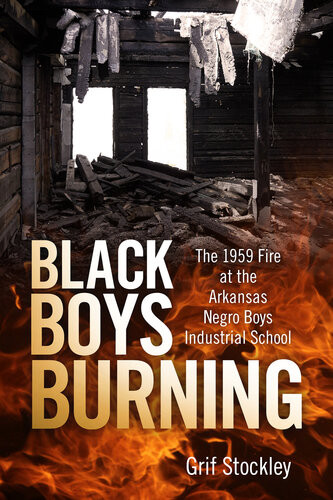

Most ebook files are in PDF format, so you can easily read them using various software such as Foxit Reader or directly on the Google Chrome browser.
Some ebook files are released by publishers in other formats such as .awz, .mobi, .epub, .fb2, etc. You may need to install specific software to read these formats on mobile/PC, such as Calibre.
Please read the tutorial at this link: https://ebookbell.com/faq
We offer FREE conversion to the popular formats you request; however, this may take some time. Therefore, right after payment, please email us, and we will try to provide the service as quickly as possible.
For some exceptional file formats or broken links (if any), please refrain from opening any disputes. Instead, email us first, and we will try to assist within a maximum of 6 hours.
EbookBell Team

4.7
36 reviewsOn the morning of March 5, 1959, Luvenia Long was listening to gospel music when a news bulletin interrupted her radio program. Fire had engulfed the Arkansas Negro Boys Industrial School in Wrightsville, thirteen miles outside of Little Rock. Her son Lindsey had been confined there since January 14, after a judge for juveniles found him guilty of stealing from a neighborhood store owner. To her horror, Lindsey was not among the forty-eight boys who had clawed their way through the windows of the dormitory to safety. Instead, he was among the twenty-one boys between the ages of thirteen and seventeen who burned to death.
Black Boys Burning presents a focused explanation of how systemic poverty perpetuated by white supremacy sealed the fate of those students. A careful telling of the history of the school and fire, the book provides readers a fresh understanding of the broad implications of white supremacy. Grif Stockley's research adds to an evolving understanding of the Jim Crow South, Arkansas's history, the lawyers who capitalized on this tragedy, and the African American victims.
In hindsight, the disaster at Wrightsville could have been predicted. Immediately after the fire, an unsigned editorial in the Arkansas Democrat noted long-term deterioration, including the wiring, of the buildings. After the Central High School desegregation crisis in 1957, the boys' deaths eighteen months later were once again an embarrassment to Arkansas. The fire and its circumstances should have provoked southerners to investigate the realities of their "separate but equal institutions." However, white supremacy ruled the investigations, and the grand jury declared the event to be an anomaly.